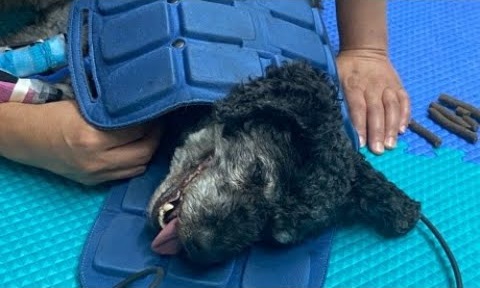In the six decades since the first laser light source was perfected by T.H. Maiman, laser therapy has found its way into doctor’s offices across various specialties and veterinary surgical suites. The first lasers used for therapeutic endeavors were considered soft — or rather, low powered. Today, lasers are efficient and provide simultaneous action on pain, contracture, inflammation, and edema. Exceeding the limits of traditional photobiomodulation LLLT (low power or Class III lasers) and HP (high power or Class IV lasers) laser therapy, Multiwave Locked System® (MLS) Laser Therapy was developed to be a painless and effective treatment method with no known side effects.
Different from other healing techniques, lasers activate three biological effects—photochemical, photothermic, and photomechanical. Activating these three simultaneously allows laser treatments to be analgesic, anti-inflammatory, repairing, regenerative, and regulating.
ASA, established in 1983, is a world leader in the research, design, production and distribution of lasers that benefit medical and veterinary professionals and patients. Focused on three therapies—Hilterapia®, MLS Laser Therapy®, and Magnetotherapy. Devices developed from their research in the united laboratory of the Clinical Physiopathological Department of Florence University and in ASA headquarters in Arcugnano, Italy have paved the way for laser therapies as we know them today.
First Came Diode
Since its inception in 1983, ASA has been at the forefront of therapeutic laser technologies. By 1986, diode lasers were introduced. Capable of 904 nm pulsed emissions, diodes act as a catalyst for therapeutic lasers. Their efficiency and small size in conjunction with their useful power improvements allowed lasers to become one of the most widespread forms of physical therapy.
Diodes evolved due to an impressive shift in wavelengths—the CW diode lasers of the late ‘90s radiated higher power wavelengths than previously seen, meaning high penetrating power and even greater results for pain management and other therapeutic options. The CO2 laser, was the entry of automatic scanning power lasers into laser therapy and is still widely used in surgical lasers today.
ASA’s laser-focus on quality, safety, and efficiency lead to the invention of the Comby laser. Comby uses different wavelength emissions, opening the door for modern laser therapy—MLS.
Radical MLS Laser Technology
While lasers became more powerful, concerns of overheating tissue showed that high power didn’t equate to high efficiency. In response to these practical usage concerns, the Multiwave Locked System® (MLS) was born. In 2001, using an impressive and efficient combination and synchronization of wavelengths and selected emission methods, MLS Laser Technology executed the most efficient biological responses ever seen. Today, MLS obtains an efficient and simultaneous action on pain, contracture, inflammation and oedema, exceeding the limits of previous therapeutic laser options.
Smaller, More Efficient
Once therapeutic laser technology and techniques were perfected, practical use solutions like portability and size became even more important. To make laser therapy more accessible, laser technologies got more compact—and eventually, portable.
By 2010, the MLS family grew to include the portable Mphi device. Boasting impressive and effective power, the Mphi changed how laser therapies were applied.
Learn more to see whether MLS Therapy is right for your practice.



